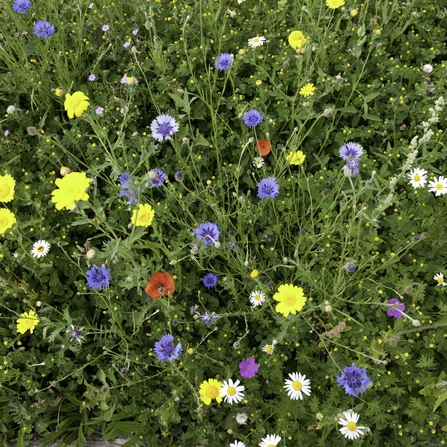As the late spring sun (finally!) becomes warmer, and the rain-showers clear, many of us take to our gardens in earnest. Drier days have us looking at a long-haired lawn, planning in the chop and neatening up the sides.
This year Yorkshire Wildlife Trust are asking you to stay your hand – or at least adjust your schedule or get creative with design. With over 20 million gardens in the UK, even the smallest grassy patches add up to a significant proportion of our land which, if managed properly, can deliver enormous gains for nature, communities and the climate.
A healthy lawn with some long grass and wildflowers benefits wildlife, tackles pollution and can even lock away carbon below ground.





